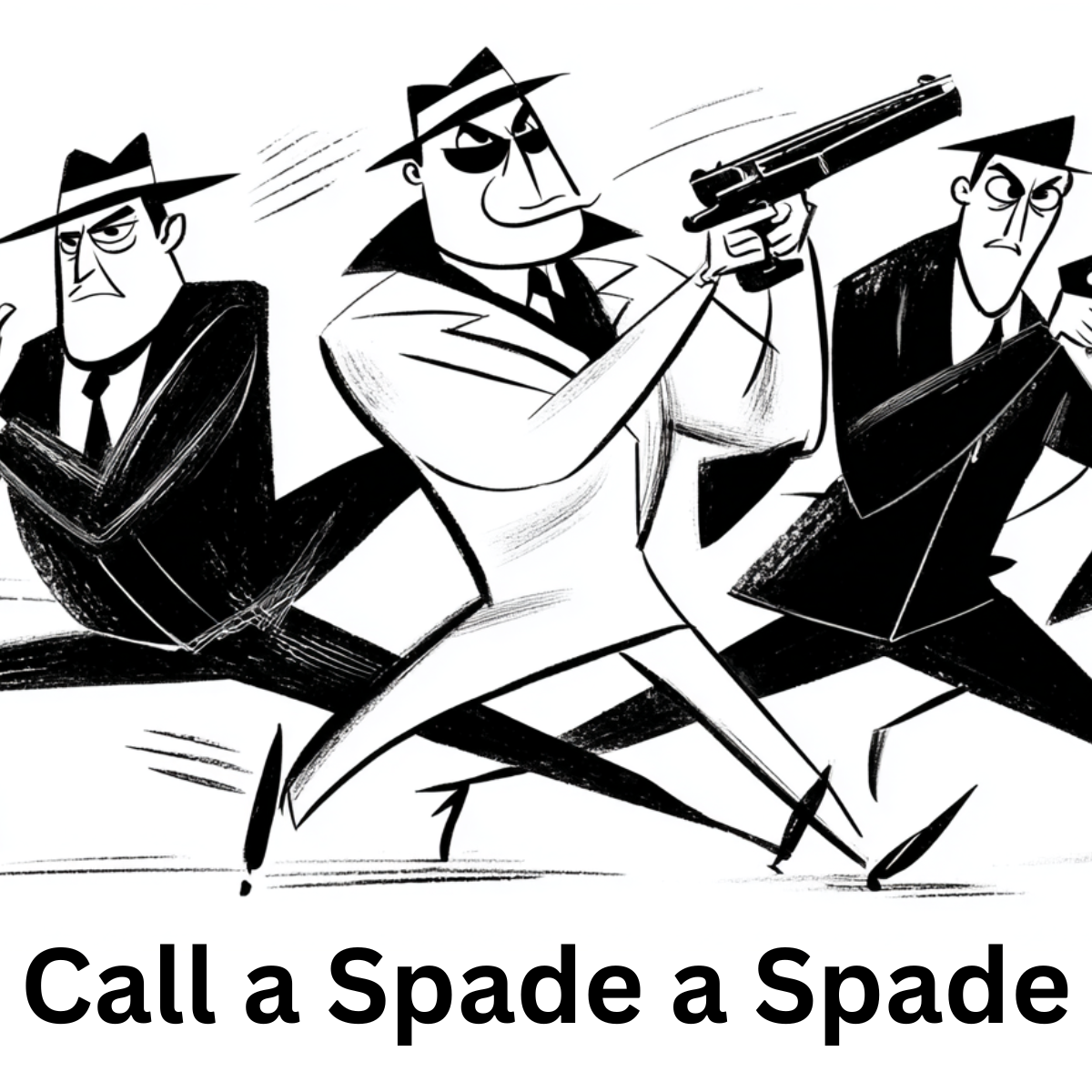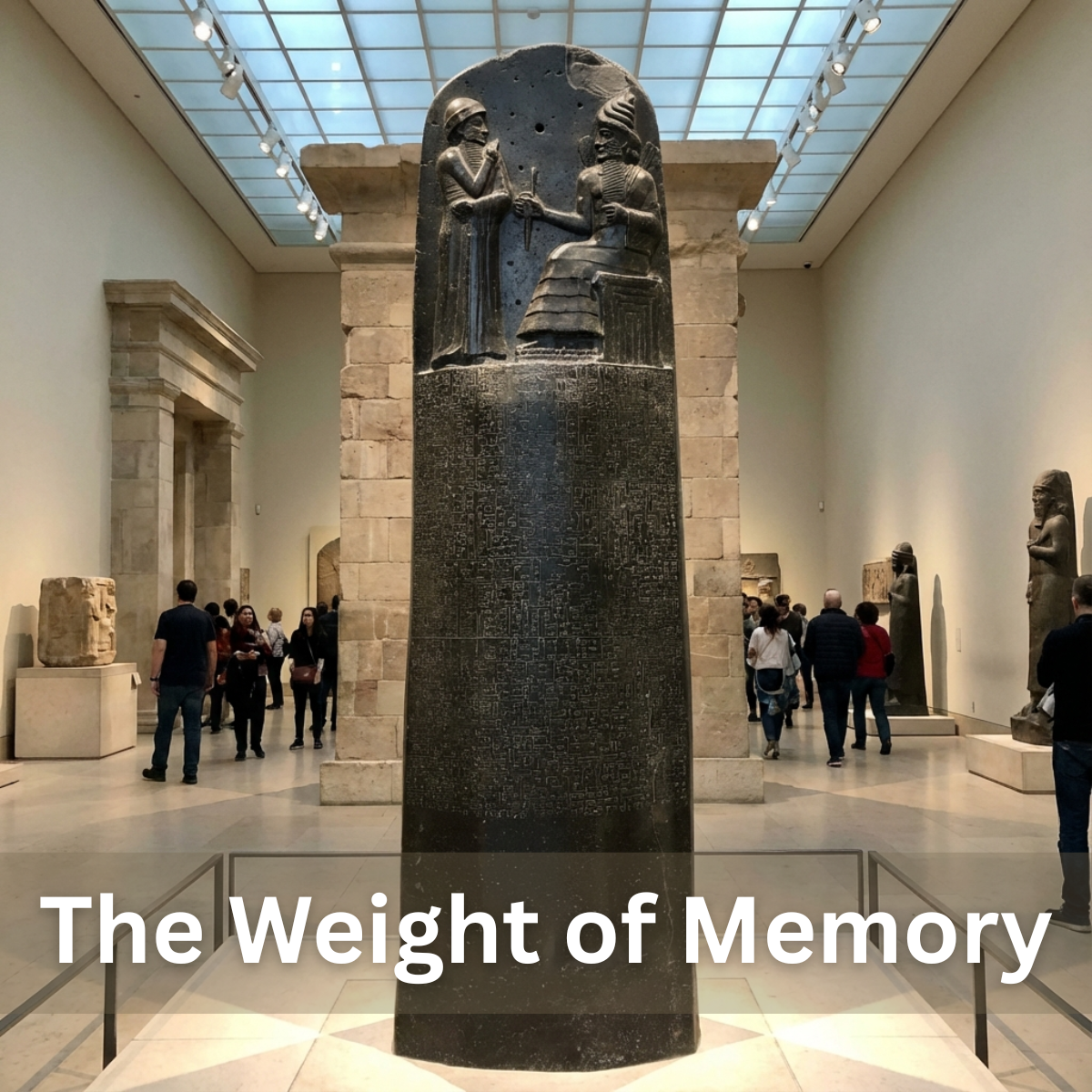Sometimes in life you just have to take a step back and really understand what you are seeing. We can get caught up in things. We can get our minds so focused on what we want, or what we need, that we allow ourselves to warp or spin reality to fit the expectation. This is a powerful human trait, which gets us far in life, but sometimes we just need to turn that off for a moment and look at things for how they really are. This can be difficult, counter intuitive even. We might be afraid of the results, of how our view of the world or of our present circumstances might change.
To “call a spade a spade” means to speak plainly and directly, telling the truth without sugarcoating it or using euphemisms, even if what you are saying is uncomfortable, blunt, or socially awkward.
The phrase has nothing to do with playing cards or gardening. It traces back to an ancient Greek expression used by the writer Plutarch, which actually referred to a “fig” rather than a spade. When it was translated into English in the 16th century, the “fig” became a “spade,” and the meaning shifted toward the idea of straightforward, unvarnished speech.
So if someone “calls a spade a spade,” they are essentially saying, let us just be honest and call this thing exactly what it is.
However, this begs the question. Are you able to see it for what it is? Or are you just calling an apple an orange because you really want an orange? This is the problem we face. Are we able to truly see things for what they are?
I heard someone say a few days ago that he felt that he might actually have TDS, which I believe is being referred to as “Trump Derangement Syndrome.” This seemed silly to me, so I ignored it, but what he said was, I have been dismissing some of my colleagues as “nut jobs” because they keep saying I have this TDS thing. However, I took a real look at what they were saying, and I hate to admit it, but they were right. He came to the conclusion that he was not looking at the present through a clear lens at all. Is this an example of an inability for someone to call a spade a spade because they cannot see clearly, because they have been convinced of one particular narrative?
What does it mean to be really objective anyway? The news media has laid claim to this objective title, but an honest look at it by anyone from any political persuasion, and you have to admit that the public are being presented two very distinct narratives. Ask ourselves this question, are there really two distinct political viewpoints? Do all the issues and events of the day neatly fall into two categories like this? The clear answer is no, that is absurd. Yet, when we read the headlines, we are convinced that everything we are seeing is proof positive that we were right all along, depending on what side of the spectrum we are on.
So this man and his supposed TDS claim may be onto something. This person went on to lament how the Democrat party was in such disarray because they did not know what they stood for anymore. That got me to thinking, is this a bad thing? Reality is that nothing is really black and white. Trump and Maga are not all evil Nazis, and Democrats and the Obamas are not all Marxist totalitarian oppressors. We are clearly being presented a forced choice here. Maybe the splinters that are occurring in both major political parties in the United States are precisely because of this. People are tired of the forced choice.
Jacques Lacan famously synchronized the forced choice concept by Hegel and Freud’s concept of unconscious repression to give us this phrase, “Your money or your life.” If someone jumped out of a dark alley and held you at gunpoint and yelled this at you, then you would have this condition of a forced choice. If you think about it, this is what is happening in politics today. We are presented with these extreme scenarios where our religion, our guns, our freedom, our environment, our culture are going to be robbed from us unless we give these political parties our, wait for it, money. Is there any difference?
Somehow my blog here digressed into politics. My apologies, just looking for a relevant example to explain this concept. The point I am trying to make with this example is that often this consideration of a forced choice clouds our judgment so badly that seeing things clearly is impossible. We cannot call a spade a spade because we are in fear of the choice that it presents to us. What we need to understand is that if you find yourself feeling this way, the choice is almost always manufactured or forced. If you do not like something, or if something is going wrong, it is ok to take a step back and realize, wait a minute, what I am seeing here does not fit the narrative. I am ok with calling a spade a spade.
Just like the Republican or Democrat reading a fake headline and then taking a step back and realizing that what happened was not at all the narrative being presented to them, we too can take a step back from the reality in our lives and ask the same question. Is what I think I am seeing true? Or am I being presented a forced choice between extremes? I think in order for us to see clearly, we need to understand and know when a forced choice scenario is being presented to us. Why is it that I cannot just say what it is? Why am I being made to feel guilty or wrong for stating what is clearly visible if you see it through a lens not clouded by a forced dichotomy?
As I think this through, I realize that we have been trained to think this way. We are always looking for the two sides of an issue. When we are in a disagreement with someone, we assume that they are on the opposite side of the problem. We immediately adopt an us versus them mentality. I am reminded of the Spy vs. Spy cartoon from Mad Magazine when I was a child. Antonio Prohías, a Cuban cartoonist, created this in 1961. If you think about it, things have not changed much since then, so perhaps he was picking up on this same thing. If you have not seen the cartoon, there are two identical spies, one dressed all in white, one all in black, constantly trying to outwit, sabotage, and destroy each other with elaborate traps and gadgets. This cartoon is completely wordless, slapstick violence, always ending with one spy winning in one strip, only to lose in the next. The irony is the spies look exactly alike, act exactly alike, and are only really different in the fact that they think they are enemies. In the cartoon, you have only two possible identities, Black Spy or White Spy. There is no third spy. No spy decides, “Hey, maybe we do not have to blow each other up today.” The rules of the comic strip are fixed, you are either the winner this time or the loser, and then you swap next week.
With this comic, the only way to see clearly is to step outside the strip, to realize the black vs. white spy game is itself a setup. The two spies never do this, but it is an interesting thing to consider in what it would take for their endless fighting to come to a resolution. This is where working on depolarization, applying critical thinking, and reframing come in. You start asking, who is drawing the comic? Who benefits from keeping the spies at war? Once you see that, the “spade” becomes visible as it really is, not as the black spy or white spy wants it to be.
In the end, the challenge is not just having the courage to call a spade a spade, it is developing the clarity to recognize the spade in the first place. That means noticing when you are being offered a forced choice, stepping back from the frame, and asking, “Who is drawing this picture for me?” Only then can you see past the black and white game, past the noise, and into the reality that has been there all along.




